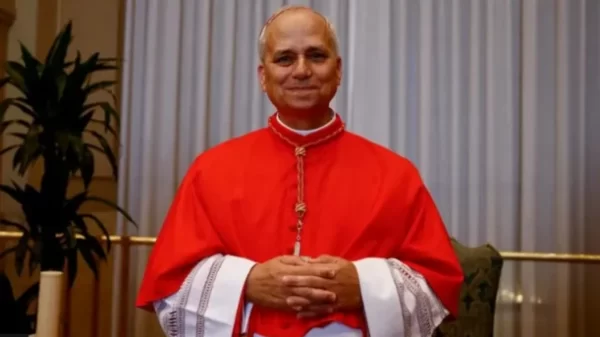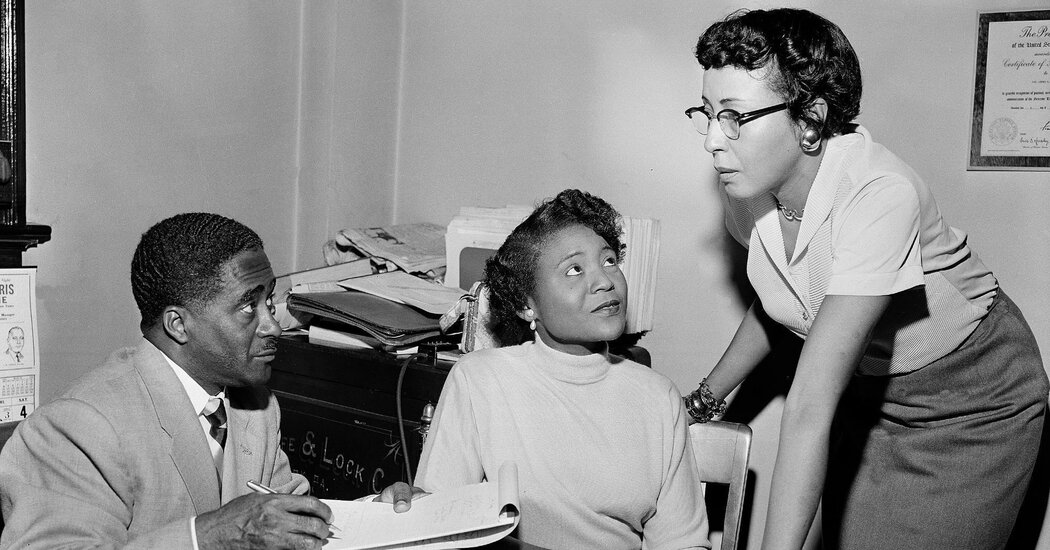The decision to rename the building drew a backlash from some at the University of Alabama who called it a “cowardly compromise.”
In a move intended to address its history of segregation, trustees at the University of Alabama agreed last week that a building named for David Bibb Graves, a former governor and Ku Klux Klan leader, will also carry the name of Autherine Lucy Foster, who in 1956 was the first Black person to attend the school.
The decision to rename the building Lucy-Graves Hall was made on Thursday, exactly 66 years after Ms. Foster started classes on the university’s campus in Tuscaloosa, Ala. It was part of an initiative that the university has undertaken as institutions across the country are re-examining the names of buildings associated with racism and slavery.
At a meeting of the university’s board of trustees on Thursday, John England Jr., a retired judge and former trustee who served as the chairman of a group that considered the renaming, said its members struggled with the question of whether to retain the name of Graves, a Democrat who served two terms, from 1927 to 1931 and 1935 to 1939.
“Some say he did more to directly benefit African American Alabamians than any other governor through his many reforms,” Mr. England, who is Black, said at the meeting. “Unfortunately, that same Governor Graves was associated with the Ku Klux Klan. Not just associated with the Ku Klux Klan, but also a Grand Cyclops. It’s hard for me to even say those words.”
The decision drew a swift backlash. The student newspaper, The Crimson White, said the building should not bear the name of a person who endorsed white supremacy at any time. In an editorial on Thursday, it said the decision was a “cowardly compromise that presents the illusion of forward momentum while clinging to a racist past.”
“Combining Lucy’s and Graves’ names conflates two legacies — one the university should embrace, and another it needs to shed,” the editorial said. “Attempting to commemorate them as equals is unjust.”
Mr. England told the board of trustees that although Graves’s connection with the Klan was “deplorable,” it was born of political expediency early in his career. The decision to combine his name with Ms. Foster’s was made “after much wrestling with it.”
Ms. Foster, now 92, could not be reached for comment. In a statement issued through the university system, she said she was “so grateful to all who think that this naming opportunity has the potential to motivate and encourage others to embrace the importance of education, and to have the courage to commit to things that seek to make a difference in the lives of others.”
Mr. England said the decision was taken in consultation with Ms. Foster’s family.
The New York Times reported in 1937 that Graves had admitted to once being a Klan member.
His name has been stripped from structures at other schools in the state, including Troy University, Alabama State University and Jacksonville State University, according to The Montgomery Advertiser, which has re-examined his legacy as governor.
“The argument has been made that Graves gave the state better schools, better roads and better health care,” Brian Lyman, the newspaper’s state government reporter, wrote on Twitter. “He also allowed rampant terror against Black Alabamians and women of all races to go unpunished.”
A spokeswoman for the university system, Lynn Cole, said that Mr. England’s working group “acknowledges the complexity of this amended name” and “will continue to engage in respectful dialogue with those who have expressed feedback.”
Since it was formed in 2020, the university’s building renaming group has stripped the names of other Klan members and supporters of slavery from buildings on the Tuscaloosa campus. Morgan Hall, named for John Tyler Morgan, a former Confederate general and Ku Klux Klan Grand Dragon, became English Hall. Nott Hall was renamed Honors Hall, shedding an association with Josiah Nott, a pro-slavery physician.
Students and organizers had pushed for some of the changes with petitions, one of which garnered about 20,000 signatures. Another, with about 2,000 names, was started by Lauren Upton, a former student who was involved in recruiting for the university’s College of Education, which is housed in Lucy-Graves Hall and is connected to a library by a tunnel where Ms. Foster took shelter from rioters.
Ms. Upton and others questioned why the trustees did not drop the Graves name.
“You are essentially saying at best he made bad decisions in order to further his career, and put many lives in danger, including Autherine Lucy Foster’s,” she said.
Benard Simelton, the president of the Alabama state conference of the N.A.A.C.P., said the organization “would prefer that the building would just have her name.”
“We think this is still somewhat a slap in the face,” he said.
After graduating from Miles College in Fairfield, Ala., in 1952, Ms. Foster, then known as Autherine Lucy, was offered a place in the University of Alabama’s graduate program in education. Her acceptance was withdrawn, however, when school officials realized she was Black.
It took three years and a ruling from a federal judge before she was allowed to enroll. Ms. Foster, 26 at the time, finally arrived on campus on Feb. 3, 1956.
Her tenure as a University of Alabama student lasted just three days. On Feb. 6, a mob came after her with eggs, forcing her to take refuge for hours in a classroom. The university suspended her, saying it was doing so for her own protection, and expelled her soon after.
“I am shocked by this turn of events,” The Times quoted Ms. Foster as saying as part of its coverage of her expulsion. “I’ve done all that I can. I was looking forward to returning to school. At this point there is nothing more I can say.”
No other Black students attended the University of Alabama until 1963, when Vivian Malone and James A. Hood were allowed to register, despite the efforts of Gov. George C. Wallace to block them.
“Autherine Lucy Foster opened that door,” Mr. England told the trustees last week.
In 1988, Ms. Foster’s expulsion was rescinded. She returned to the school and earned a master’s degree in education while her daughter Grazia Foster was enrolled as an undergraduate. In 2019, she was given an honorary doctorate. The university has also recognized her with a scholarship and by naming the Autherine Lucy Clock Tower for her in 2010.






























